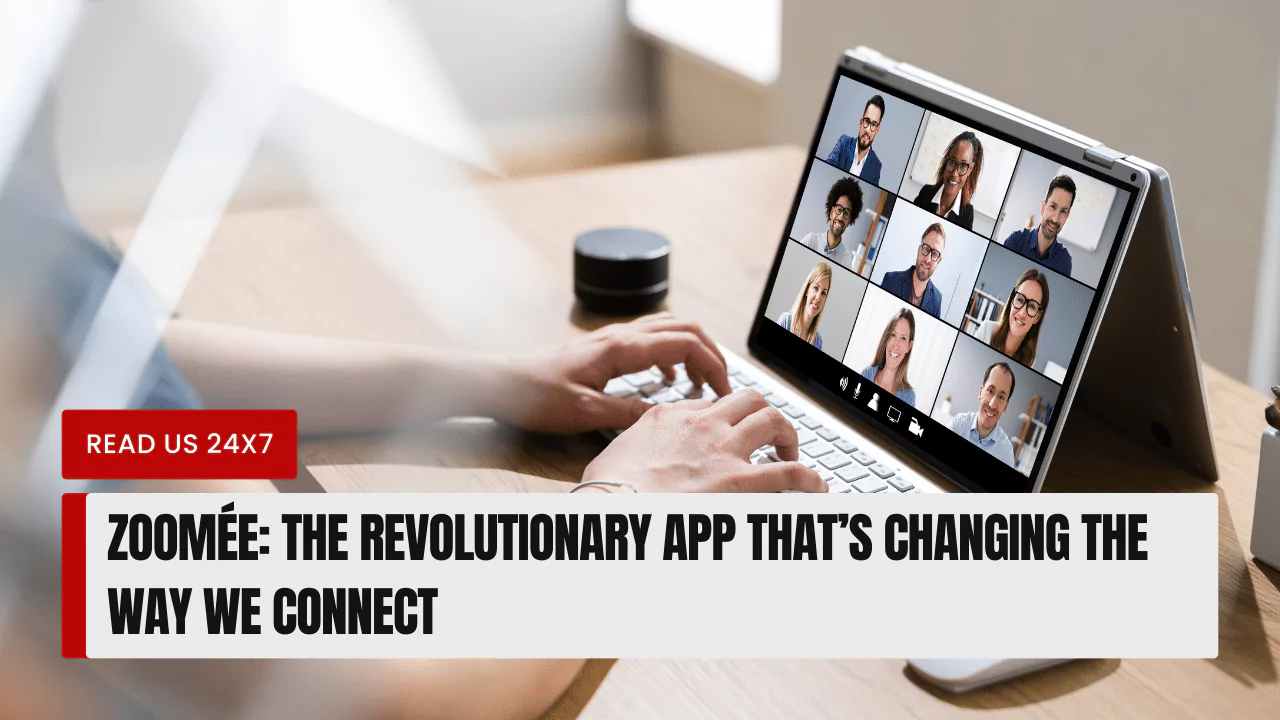Zoomée is a new app that allows users to connect through video and audio calls, screen sharing, messaging, and more. It is designed to enhance the online learning experience for students and teachers, as well as to facilitate collaboration and communication for professionals and businesses.
In this article, we will explore what Zoomée is, how it works, and why it is changing the way we connect.
Understanding Zoomée
Zoomée is a cloud-based app that enables users to host or join online meetings, webinars, and classes. It was created by a team of developers and educators who wanted to improve the quality and accessibility of online education. Zoomée is derived from the French word “zoomer”, which means to zoom in or out, and also has positive connotations of speed, excitement, and fun.
Zoomée aims to provide a smooth and engaging online experience for users, with high-quality video and audio, interactive features, and an easy-to-use interface. It also offers security and privacy options, such as encryption, password protection, and waiting rooms, to ensure that users can control who can access their meetings. However, some users may have concerns about the data collection and storage practices of Zoomée, as well as the potential risks of cyberattacks, hacking, or phishing. Therefore, it is important to read the terms and conditions of Zoomée before using it, and to follow the best practices for online safety.
Key Benefits of Using Zoomée
Zoomée offers a range of benefits for users who want to connect with others online, whether for education, work, or personal purposes. Some of the key benefits are:
- Seamless video and audio: Zoomée allows users to see and hear each other clearly, with minimal lag or distortion. Users can also adjust the video quality, mute or unmute themselves, and use virtual backgrounds or filters to enhance their appearance.
- Screen sharing: Zoomée enables users to share their screen with others so that they can show their slides, documents, or other applications. Users can also annotate their screen, use a whiteboard, or co-edit files with others.
- Recording and playback: Zoomée allows users to record their meetings, webinars, or classes, and save them locally or in the cloud. Users can also access the recordings later, and watch them at their own pace, with captions and transcripts.
- Messaging and file sharing: Zoomée enables users to chat with others, either individually or in groups, during or outside of meetings. Users can also send files, images, or links, and use emojis, stickers, or gifs to express themselves.
- Virtual seating charts: Zoomée allows users to create and customize their own virtual seating charts, where they can assign seats to participants, and move them around as needed. This feature can help teachers to manage their classes and to promote interaction and collaboration among students.
How Zoomée Is Changing EdTech?
Zoomée is not only a tool for online communication, but also a platform for online learning. It is changing the way that education is delivered and received, by offering the following advantages:
- Personalized learning: Zoomée allows teachers to tailor their instruction to the needs and preferences of each student, by using features such as breakout rooms, polls, quizzes, and feedback. Teachers can also monitor the attendance, participation, and performance of students, and provide them with individualized support and guidance.
- Data-driven insights: Zoomée allows teachers to collect and analyze data from their online classes, such as the number of attendees, the duration of meetings, the engagement level of students, and the results of assessments. Teachers can use this data to evaluate their teaching effectiveness and to identify areas for improvement or intervention.
- Integration with other platforms: Zoomée allows teachers to integrate their online classes with other educational platforms, such as learning management systems, courseware, or textbooks. Teachers can also use third-party apps, such as Google Drive, Dropbox, or Kahoot, to enhance their online classes with additional resources or activities.
Getting Started With Zoomée
Zoomée is easy to use and does not require any special equipment or software. To get started with Zoomée, users need to follow these steps:
- Signing up and downloading the app: Users need to create a free account on the Zoomée website, and then download the app on their device, such as a computer, tablet, or smartphone. Users can also use Zoomée on their web browser, without downloading the app.
- Logging in and starting a meeting: Users need to log in to their Zoomée account, and then click on the “New Meeting” button to start a meeting. Users can also schedule a meeting in advance, or join an existing meeting by entering the meeting ID and password.
- Pricing and plans: Zoomée offers different pricing and plans for different types of users, such as individuals, educators, students, or businesses. The basic plan is free and allows users to host up to 100 participants for up to 40 minutes per meeting. The pro plan costs $14.99 per month, and allows users to host up to 300 participants for up to 24 hours per meeting, and also offers additional features, such as cloud recording, custom branding, and admin controls. The enterprise plan costs $19.99 per month, and allows users to host up to 500 participants for unlimited time, and also offers additional features, such as dedicated phone support, single sign-on, and company-wide reporting.



